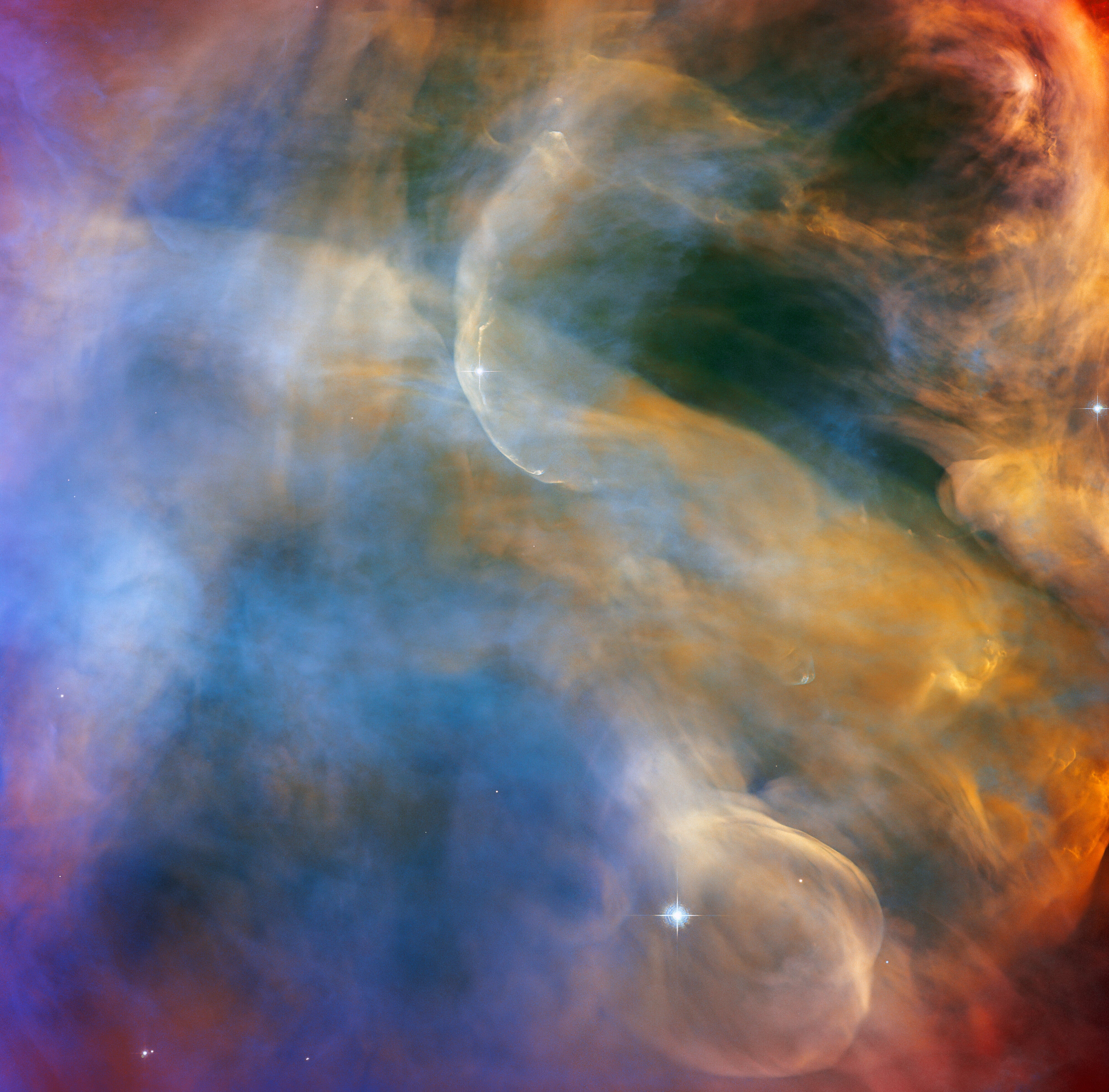Behold: Hubble telescope reveals elegant cosmic tie-dye
The Hubble Space Telescope has captured of cosmic wash of color and shape formed by the fierce radiation of young stars

Your support helps us to tell the story
From reproductive rights to climate change to Big Tech, The Independent is on the ground when the story is developing. Whether it's investigating the financials of Elon Musk's pro-Trump PAC or producing our latest documentary, 'The A Word', which shines a light on the American women fighting for reproductive rights, we know how important it is to parse out the facts from the messaging.
At such a critical moment in US history, we need reporters on the ground. Your donation allows us to keep sending journalists to speak to both sides of the story.
The Independent is trusted by Americans across the entire political spectrum. And unlike many other quality news outlets, we choose not to lock Americans out of our reporting and analysis with paywalls. We believe quality journalism should be available to everyone, paid for by those who can afford it.
Your support makes all the difference.While the James Webb Space Telescope is just getting started studying the Cosmos, the venerable Hubble Space Telescope, launched in the 1990s, has yet to stop, and the Hubble’s most recent images is colorful example of why its still trucking on.
A wash of tie-dye colors and tenuous, sinuous shapes, Hubble’s new image is a picture of stellar gas and violent shock waves in the Orion Nebula, which lies 1,000 light years away in the “belt” of the constellation Orion. The nebula is vast, 24-light years across, a cloud of stellar gas and dust that serves as a birthplace and nursery for young stars.
The curving shapes seen at the top and bottom of the image are formed by shock waves in the gas and dust created when the stellar winds and other outflows of gas and radiation from young stars pushes against and compresses the clouds of gas and dust in the nebula.
In the image, it is the the stellar outflows of the star IX Ori, which lies at the outskirts of the nebular, generating the shock waves and curving shapes seen among the colorful clouds.
As a relatively nearby site of star formation, the Orion Nebula is a frequent target of astronomers and the Hubble Space Telescope. By studying the way stellar outflows shape the surrounding gas and dust, astronomers can better understanding those outflows and how they affect the formation of other stars.
The Hubble telescope was launched in 1990 and immediately encountered its first challenge — a flaw in its primary mirror that had to be corrected with optics installed by astronauts using the space shuttle. The repaired telescope went on to capture some of the most stunning images of the universe ever seen, though in recent years the aging telescope has been plagued by multiple computer errors that have at time pushed the telescope offline.
Nevertheless, the Hubble keeps coming back to do more science, as the colorful Orion Nebula image brings home.
Join our commenting forum
Join thought-provoking conversations, follow other Independent readers and see their replies
Comments